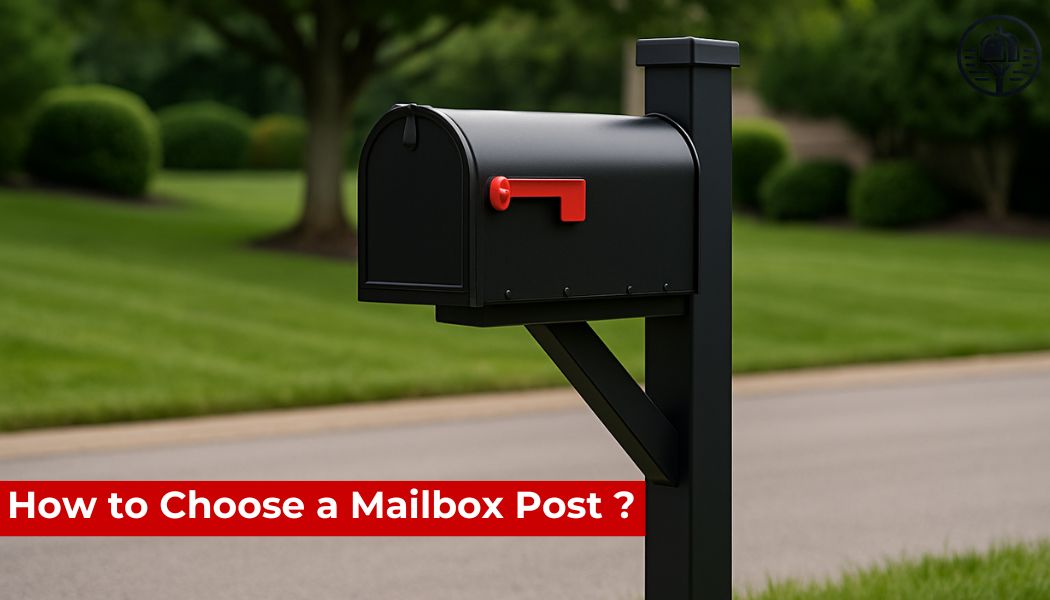Selecting the right mailbox post might seem like a minor detail, but it plays a critical role in both the look and function of your home’s exterior. A high-quality mailbox post ensures stability, durability, and compliance with postal regulations — all while enhancing your curb appeal.
In this article, we'll guide you through the essential factors to consider when choosing a mailbox post, whether you're installing a new one or replacing an old, worn-out model.
Why Your Mailbox Post Matters
Your mailbox post is more than just a support structure. It must withstand outdoor conditions, support the weight of your mailbox, and comply with installation standards. A poorly chosen or installed post can lead to leaning, rusting, or even damage to your mail delivery.
Plus, as a visible part of your home's entryway, your mailbox post contributes to the overall style of your property. A modern home deserves a sleek, durable design, while traditional homes may benefit from more classic or ornamental features.
Types of Mailbox Posts
There are several mailbox post types available, each with its pros and cons. Here’s a breakdown of the most popular options:
1. Wood Mailbox Posts
Wood is a traditional choice, appreciated for its classic look and customization potential. Cedar, redwood, and pressure-treated pine are commonly used.
Pros:
-
Easy to paint or stain
-
Offers a warm, natural appearance
-
Affordable
Cons:
-
Requires regular maintenance
-
Can rot or warp over time
2. Metal Mailbox Posts
Made from aluminum, steel, or wrought iron, metal mailbox posts are strong and modern-looking.
Pros:
-
Highly durable
-
Low maintenance (especially powder-coated)
-
Great for contemporary homes
Cons:
-
Heavier to install
-
Some models can be prone to rust if untreated
💡 Check out our Mailbox Post Collection for stylish, corrosion-resistant metal options.
3. Plastic or PVC Mailbox Posts
These posts are lightweight and easy to install. They're resistant to rot and rust, making them ideal for homeowners who want minimal upkeep.
Pros:
-
Weather-resistant
-
Available in multiple styles
-
Low maintenance
Cons:
-
Less sturdy than metal or wood
-
May fade or crack over time
4. Decorative and Custom Posts
Some posts come with built-in newspaper holders, decorative scrolls, or unique designs to match a specific architectural style.
Pros:
-
Enhances curb appeal
-
Can be matched with custom mailboxes
Cons:
-
Often more expensive
-
Limited compatibility with standard boxes
Key Factors to Consider
When selecting a mailbox post, keep these critical factors in mind to ensure long-term satisfaction:
🏗️ Material and Durability
Choose a material that fits your climate. For example, metal and PVC posts resist snow, rain, and UV better than untreated wood. A durable mailbox post will save you money and maintenance effort over time.
📏 Size and Height
The standard height for curbside mailbox installation in the U.S. is 41 to 45 inches from the ground to the mailbox door. Make sure your post allows you to stay within postal regulations.
🛠️ Installation Method
Mailbox posts can be direct-buried (installed straight into the ground with concrete) or surface-mounted (bolted to a base). Consider:
-
Soil type
-
Tools available
-
Whether you prefer a temporary or permanent setup
🎨 Aesthetic Style
Your post should complement the design of your home and mailbox. Modern posts often feature clean lines and matte finishes, while traditional ones include decorative elements or natural finishes.
👉 Browse our Mailbox Post Collection for elegant and modern solutions.
How to Install a Mailbox Post
Installing your mailbox post correctly is essential for function and safety. Here’s a basic step-by-step overview:
-
Choose the location according to postal service guidelines.
-
Dig a hole 20–24 inches deep.
-
Position the post and ensure it is vertically level.
-
Add concrete and let it set for at least 24 hours.
-
Attach the mailbox securely once the post is stable.
Always double-check your local postal regulations and community HOA rules before installation.
Common Mistakes to Avoid
When choosing and installing your mailbox post, try to avoid these common errors:
-
Using untreated wood that can quickly rot or warp
-
Installing the post too shallow, leading to instability
-
Ignoring local height regulations
-
Choosing a mismatched style that clashes with your home or neighborhood
Taking a few extra minutes to measure, plan, and choose the right materials can prevent costly replacements down the road.
Final Thoughts
Choosing the right mailbox post is a combination of practicality and style. You need a post that can withstand the elements, support your mailbox securely, and match the aesthetic of your home.
Whether you're going for a sleek modern mailbox post, a classic wooden look, or a low-maintenance PVC model, be sure to prioritize durability, compliance, and curb appeal.
For a curated selection of high-quality posts, visit our Mailbox Post Collection and find the perfect fit for your home.
FAQ: Choosing a Mailbox Post
Q: What is the best material for a mailbox post?
A: Metal posts (especially aluminum or stainless steel) offer the best durability with minimal maintenance. PVC is also great for low-maintenance environments.
Q: How deep should I bury my mailbox post?
A: Typically, 20 to 24 inches is deep enough, especially if you’re using concrete. Make sure the mailbox height remains between 41–45 inches from the ground.
Q: Can I reuse an old mailbox with a new post?
A: Yes, as long as the mailbox size is compatible with the post bracket. Always verify mounting compatibility before installation.
Q: Do mailbox posts come with installation hardware?
A: Many high-quality posts include the necessary mounting brackets and screws, but it’s always best to check the product description or ask the seller.
Q: Can I paint my mailbox post?
A: Yes. Wooden posts can be stained or painted, while metal and PVC posts should be painted with materials suitable for their surfaces (e.g., rust-proof metal paint).

